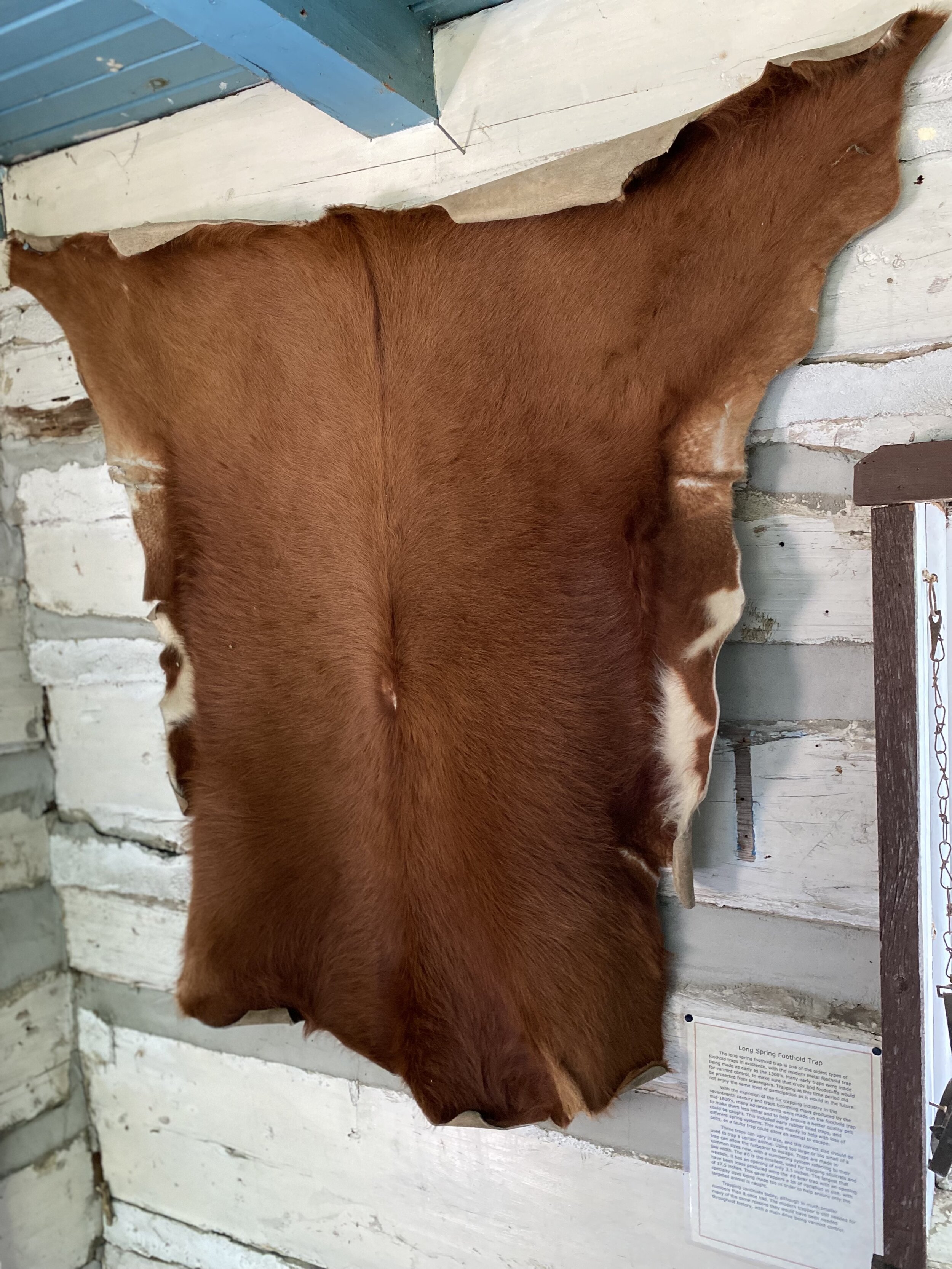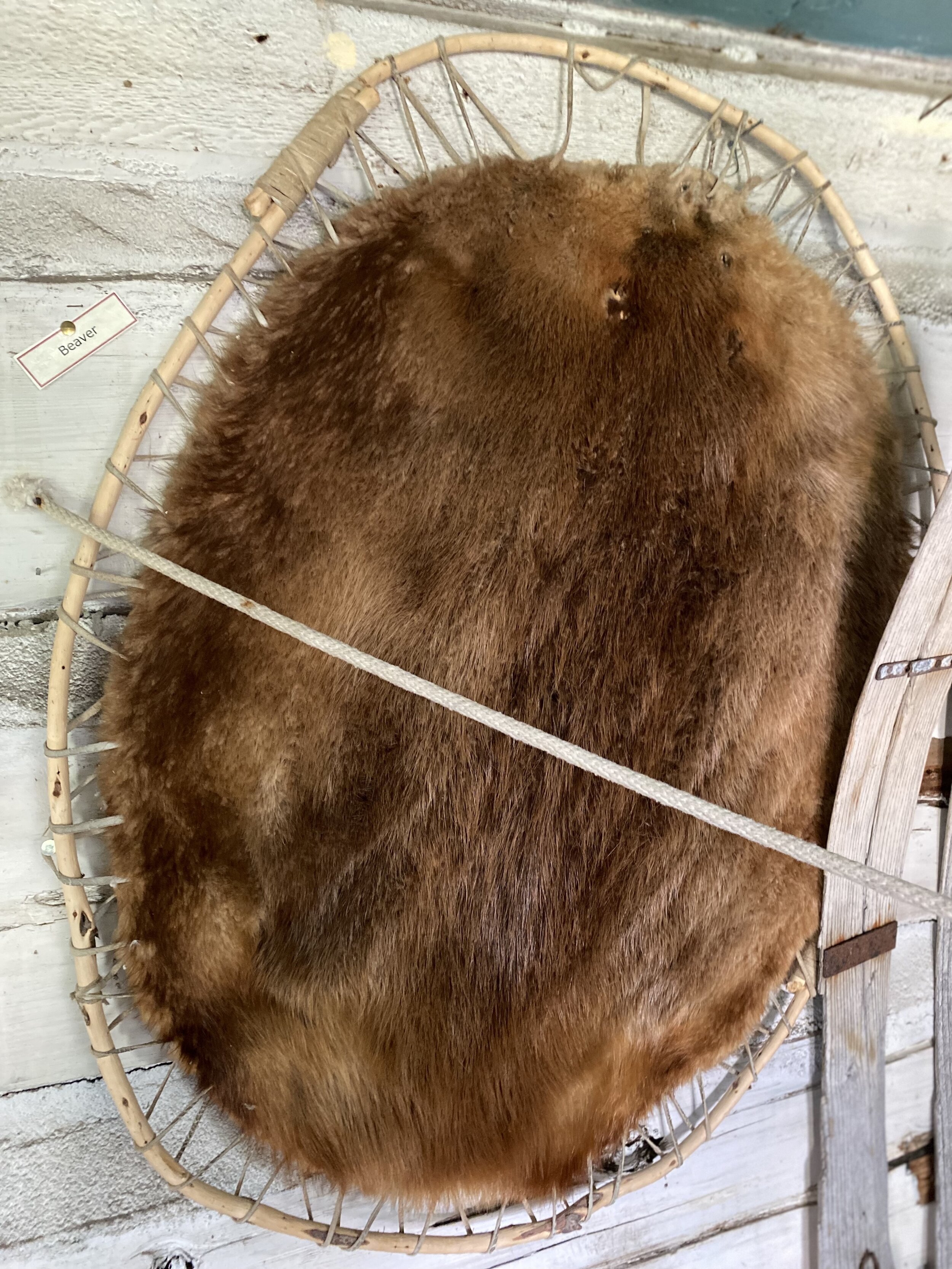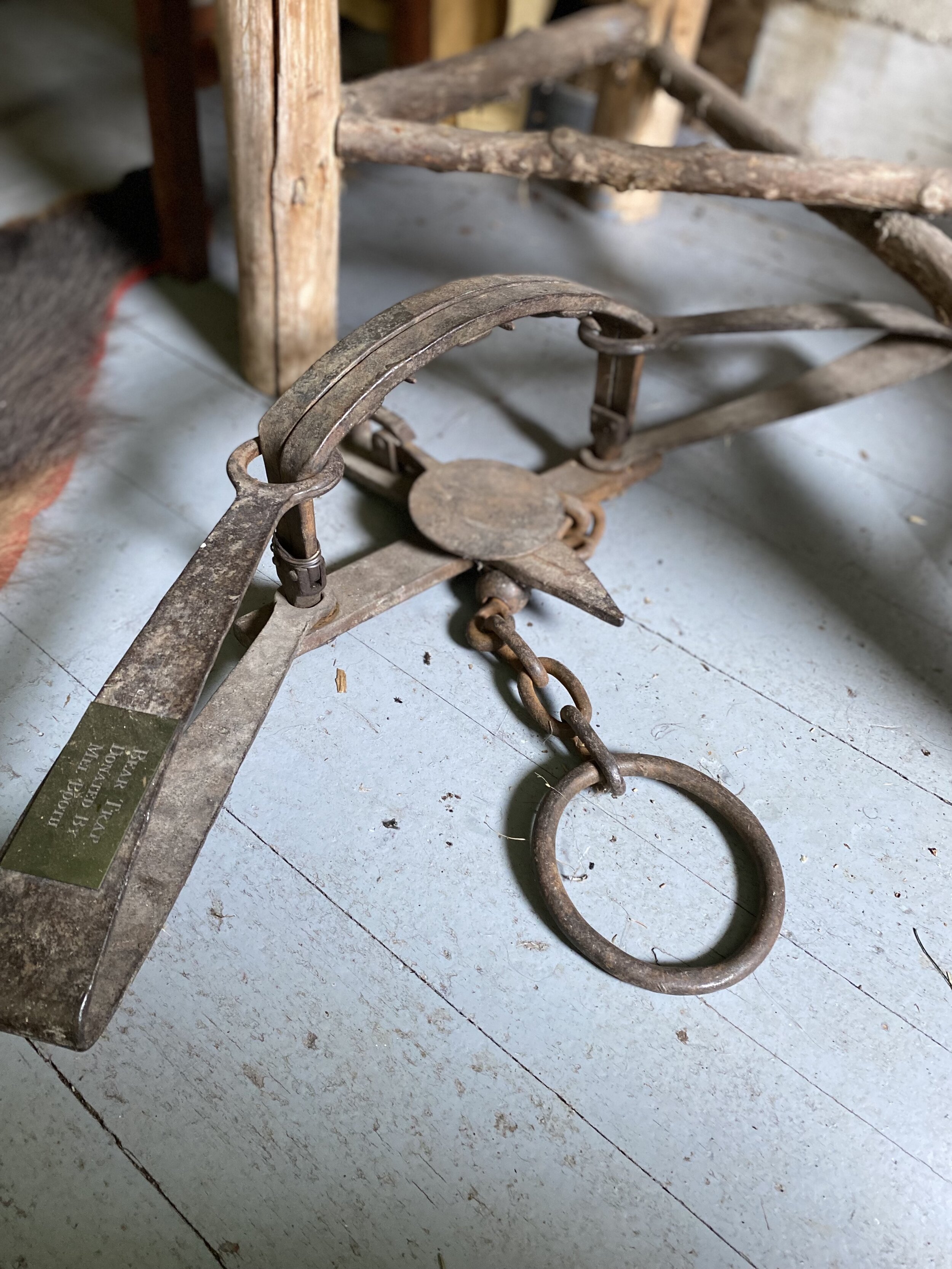TRAPPING: A SETTLER’S LIVING
In the time of the settlers, the fur trade was the lifeblood of society. Furs functioned as valuable barter currency. They also provided warmth and clothing for the harsh Canadian winters. Trappers would often leave the homestead for weeks at a time. Upon return, they'd bring a rich bounty of furs and skins. They'd sell them at the local trading posts or turn them into jackets, blankets, or rugs.
But how did these trappers get the job done? There were many methods that trappers would use to get their catch. These methods included foothold, deadfall, and snare traps.
Foothold traps were a steel mechanism in which two steel “jaws” would snap shut on an animal’s leg. This occurred when the animal stepped on its spring-loaded pressure plate. Foothold traps were once used to keep poachers off of farmer’s property! It was often used for larger games such as muskrat, beaver, wolves, and bears.
Foothold traps are still used today in Canada. But, there is a lot of controversy due to the pain and suffering it causes the animal. They often panic and resort to desperate means to escape. It is important to understand the ethical risks involved in these very painful traps.
In the 1800s, they were an effective means for trappers to get valuable furs. The bigger the game, the more valuable the pelt. They were also popular because the trap itself did not affect the quality of the pelt. It would preserve it to keep its value at a trading post.
Deadfall traps are the simplest trap that humans designed. They composed of a heavy object suspended by a sensitive trigger with some bait around it. The "trigger" was often a young tree branch. When an animal disturbs the trigger, it releases the heavy object, crushing the prey. This kills the animal in an instant.
Its inexpensive and simple design made it a popular choice for catching animals for meat. The crushing would likely ruin the pelt. This design was often used for mid-size to smaller prey, such as groundhogs and weasels. Small birds such as grouse and pheasants were also trapped this way.
The snare trap is one of the most effective means of trapping fast-moving animals. Trappers suspended a slipknot from a tree. They would set it along the path of migrating animals or near watering holes. When an animal’s head passes through the snare and walks away, the noose tightens, then killing the animal.
This is an effective means of capture, as trappers did not have to go looking for their kill. This method also preserved the skin of the animal, meaning trappers could trade them. Settlers used this method on the smaller and faster game around such as rabbits, foxes, and small deer.
Once settlers captured and skinned the animals, their meat and fur had many uses. Settlers learned from indigenous people how to use every part of the animal. They would butcher the meat and preserve it via smoking, curing, or pickling. The furs were either sold to indigenous traders or shipped back to the old world. Furs were also used to make jackets and blankets. These were vital as winters in Canada could be freezing without proper insulation!
Check out the “Trapper’s Cabin” at the Settler’s village and see all the great uses for fur in person!
Liam Parker









